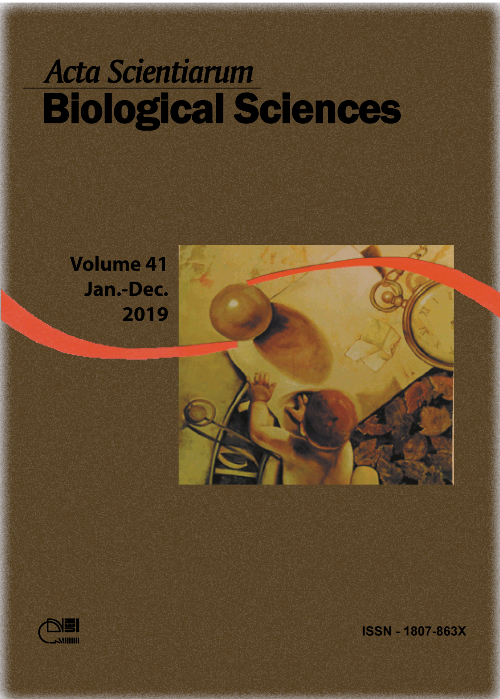Floral, reproductive and pollinators biology of <i>Myrcianthes pungens</i> (Berg) Legrand, neglected species
Resumo
Studies related to floral biology are essential for the understanding of the ecological relations between different species, and the beginning of breeding programs. In this way, the aim of the study was to elucidate aspects of floral and reproductive biology and floral visitors of this species. Information about floral morphology and morphometry, anthesis, nectaries and pollinator attractive structures, characterization of floral visitors, receptivity of androcytic stigma and maturation, in vitro pollen storage and germination, and characterization of the reproductive system were obtained. The guabiju tree has hermaphrodite flowers, and the floral opening occurs mainly during the night, but also in the morning. Anthers are the main attractive structure to the pollinating insects, releasing fetid odor, attracting mainly flies and wasps characterized as occasional pollinators, and moths characterized as effective pollinators. For the germination of pollen, it is recommend using it without desiccation, collected in post-anthesis, and for the culture medium the use of 11% of sucrose and 7% of boric acid. Pollen presents recalcitrant behavior, so even when stored in refrigerator, freezer, liquid nitrogen and natural environment lose viability in less than 30 days. It presents high reproductive efficiency, and can be considered self-compatible; however, fertilization also occurs by cross-pollination.
Downloads
DECLARAÇÃO DE ORIGINALIDADE E DIREITOS AUTORAIS
Declaro que o presente artigo é original, não tendo sido submetido à publicação em qualquer outro periódico nacional ou internacional, quer seja em parte ou em sua totalidade.
Os direitos autorais pertencem exclusivamente aos autores. Os direitos de licenciamento utilizados pelo periódico é a licença Creative Commons Attribution 4.0 (CC BY 4.0): são permitidos o compartilhamento (cópia e distribuição do material em qualqer meio ou formato) e adaptação (remix, transformação e criação de material a partir do conteúdo assim licenciado para quaisquer fins, inclusive comerciais.
Recomenda-se a leitura desse link para maiores informações sobre o tema: fornecimento de créditos e referências de forma correta, entre outros detalhes cruciais para uso adequado do material licenciado.












1.png)




3.png)













